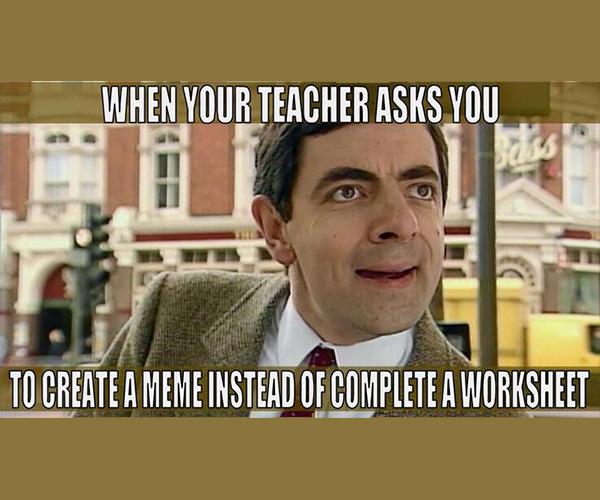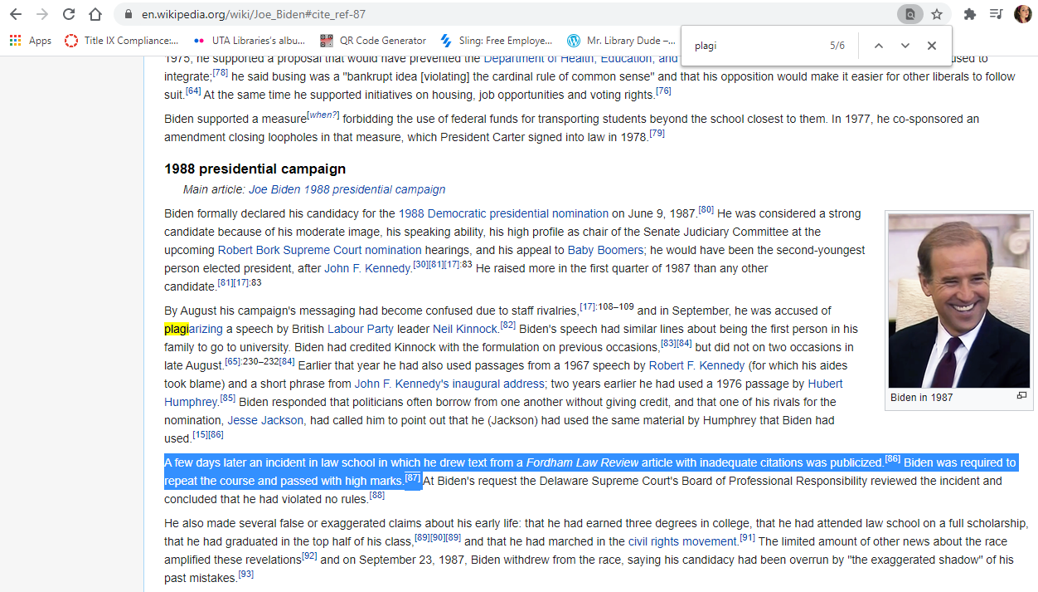
Why You Should Use Social Media In the Classroom
Related Topics
Almost all of us check our phones in the morning. During important events, it’s more likely for us to check our social media platforms for tweets, updates, or posts from politicians and news anchors, than it is for us to turn on the news.
Students especially are more familiar with social media as a platform of communication. It isn't just about commenting on their friend’s Facebook status. Social media has become the hub of information for multiple generations and demographics of people.
When I work with English 1301 and 1302 students, I know that I am teaching them topics that they might find boring or even unimportant. While I heavily disagree with that general sentiment, I understand that as a student, hearing a lecture on academic integrity or on Ethos, Pathos, and Logos for the millionth time is probably not the most exciting way to spend their day at college. So what can we as educators do to make our lessons matter to our students? How do we create interest where there might otherwise really not be?
Using social media and other internet resources in our lessons is an important part of creating an accessible lesson for our students. Not only is it important because it makes it easier for our students to relate to this sort of content, but quite frankly, it’s more genuine.
We would be kidding ourselves if we said that, as academics, we don’t care about our image on social media. In fact, many academics use social media as a platform to make connections to other academics and put our ideas and new projects out there. Now, social media is literally a way to connect and communicate, and everyday our students are commenting on news articles being shared, politicians making public statements, and the new things that are being discovered every day.
If we want our students to do well in our classes, and to actually see how the work they already are doing is related to the work that happens in the classroom, then we have to incorporate social media into our lessons.
Let me give you a quick example from my academic integrity course. Again, this is a class that I give to ENGL 1301 and 1302 students, but really could be given to any class where projects or papers are assigned. In this specific class, I use tweets and YouTube videos to help students understand what academic integrity looks like in the real world, and how it relates to them when they are working on papers for their class.
Clickenomics
The first example I like to use is how Twitter users will make a joke, and then when popular content creators on Twitter see that the tweet is going to start “making numbers” (get lots of likes and retweets), they simply copy and paste it into their own tweet.
Many accounts will start to do this, to the point that when you come across one of these tweets, you could copy and paste them into the search bar on Twitter and find that many accounts have “stolen” the same joke. And while this might not seem like a big deal, retweets and likes mean revenue to many Twitter users. If a tweet gets popular enough, brands can reach out for you to advertise in a reply under your popular tweet, so that when other users click on your tweet to see the comments, the first thing they see is a product, often with a link that will get the original poster (OP) some sort of ad revenue.
How does this help students understand academic integrity? When I show my students examples of these kinds of tweets, I relate it back to the classroom by telling them why it’s a problem to copy someone’s work from an article, or academic journal, or reading guide, etc. When students do this, not only are they robbing themselves of an opportunity to express their own writing voice, but they are robbing that author of the click-income. Students understand money matters, especially in our capitalistic world.
But it’s not just about the money; it’s about the clout.
Clout Chasers
Just like in the social media-verse, in academia, clout (reputation) is important. I try to take this time to remind students that when they are writing any paper, or working on any project, where they have to use sources, they are actually entering into a larger academic conversation. And in academia, citing your sources not only ensures that you're properly giving respect and affirmation to those who have written about your topic before you, but puts you into that conversational circle. When a student decides to not cite a source, or simply copy and paste something and assert the claim as theirs, they are robbing the original author of that idea or concept of the academic clout associated with it.
Like students understand money, they understand the importance of gaining recognition for your work. But to really bring it home, I like to remind students that having an academic integrity strike on their record can affect them in the long run. While they might think, “Well, I’m young, I’m in college, everyone will forget about it,” the reality is that it can come back to haunt you.
"There's No Such Thing as Bad Publicity"
For this, I have two really fun examples that I share with my students.
In 2016, Melania Trump addressed the Republican National Convention with a speech that was copied almost word-for-word from a speech that Michelle Obama gave in her address to the Democratic National Convention in 2008. This is the video I share with students, and I encourage you to watch it.
This example is incredibly useful, because not only is Melania Trump claiming someone else’s words are hers, she’s doing the thing that many students think will get them out of plagiarism trouble, which is changing up a few of the words so that it sounds a little bit different.
Melania Trump faced an incredible amount of backlash for this, and got all sorts of bad press. And just in case this example doesn't work, because the students think that it was too public of an event, I love giving them the example of Joe Biden, who was charged with plagiarism in law school for not giving appropriate citations in one of his papers.

A screenshot of Joe Biden's Wikipedia page, highlighting the plagiarism charges levied against him in law school.
To this day, this fact is in his Wikipedia page, and came up in 1988 when he first ran for president.
These kinds of things follow you, and can affect one’s future professional career. This example quickly changes my students’ minds about the effects of academic dishonesty.
Conclusion
I truly believe that without these examples from social media and the internet, my students wouldn’t realize the importance of my seemingly boring academic integrity class. As I am going through these examples, I watch them transform from feigned interest, to genuine concern, to having vibrant conversations about examples and the implications. The lesson suddenly matters to them. They suddenly understand it, and they want to talk about it with references to their own experiences.
So, want to get your students talking in your class? Want them to have heated discussions and bring in their own experiences to the conversation? Bring in some social media to your classes!

Add new comment